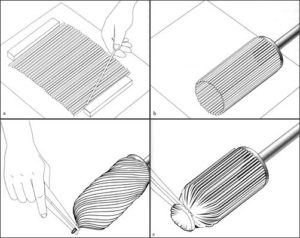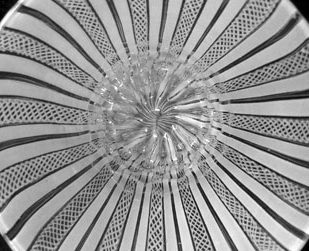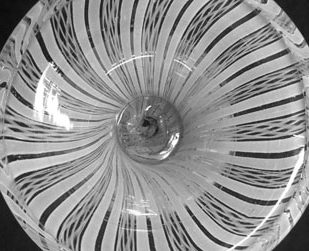
In 1527 brothers Filippo and Bernado Catani (also known as the Serena brothers, after their glassworks) patented a technique known as filigrana. The technique used white glass, known as lattimo from the Italian for milk, in canes to create beautifully intricate patterns. The opaque glass was produced by adding tin and lead to the molten batch. The delicate white designs highlighted the art of the craftsmen and began to replace the gold ornamentation which was popular as decoration on glass previously. The white decoration was fashionable and grew in status amongst refined society.
To produce the complex patterns white canes of glass would be laid in a mould alternating with colourless glass canes. The glassblower would roll a colourless glass bulb over the canes to pick them up and then ‘marver’ them, which means they rolled them over a flat surface to produce a smooth surface with white canes embedded in clear glass. This pattern of simple stripes was called a fili. More complex patterns followed including a retorti where canes were twisted into a spiral.
A variant on this technique that seems to have come slightly later involved creating a cylinder of canes by laying them in a sheet which was heated in the furnace before rolling the canes around the circumference of a clear glass collar. The canes would be fused into a cylindrical shape, which could then be expertly worked by the craftsman.
Back to Filigree Drinking Glasses



